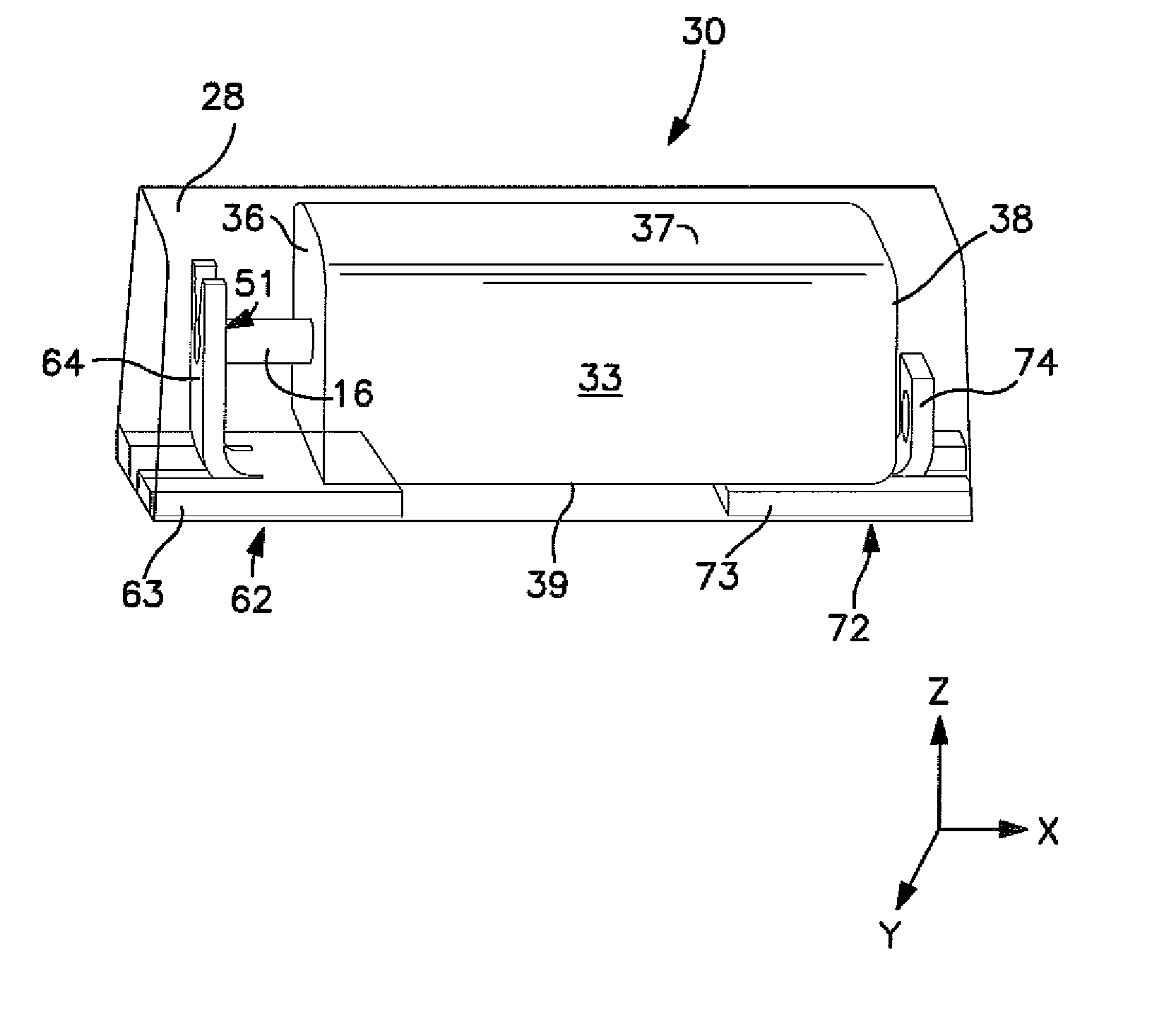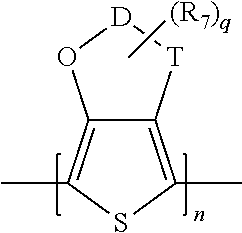Solid Electrolytic Capacitor with Improved Performance at High Voltages
a technology of electrolytic capacitor and high voltage, which is applied in the manufacture of electrolytic capacitors, capacitor dielectric layers, superimposed coating processes, etc., can solve the problems of low surface area and significantly limit the capacitance that can be achieved
- Summary
- Abstract
- Description
- Claims
- Application Information
AI Technical Summary
Benefits of technology
Problems solved by technology
Method used
Image
Examples
example 1
[0072]8,500 μFV / g tantalum powder was used to form anode samples. Each anode sample was embedded with a tantalum wire, sintered at 1800° C., and pressed to a density of 5.6 g / cm3. The resulting pellets had a size of 5.20×3.70×0.85 mm. The pellets were anodized to 72.5V in water / phosphoric acid electrolyte with conductivity 8.6 mS at temperature of 85° C. to form the dielectric layer. The pellets were anodized again to 160V in water / boric acid / disodium tetraborate with conductivity 2.0 mS at temperature of 30° C. for 30 seconds to form a thicker oxide layer built up on the outside. A conductive polymer coating was then formed by dipping the anodes into a dispersed poly(3,4-ethylenedioxythiophene) having a solids content 1.1% and viscosity 20 mPa·s (Clevios™ K, H.C. Starck). Upon coating, the parts were dried at 125° C. for 20 minutes. This process was repeated 10 times. Thereafter, the parts were dipped into a dispersed poly(3,4-ethylenedioxythiophene) having a solids content 2% and ...
example 2
[0073]34,000 μFV / g tantalum powder was used to form anode samples. Each anode sample was embedded with a tantalum wire, sintered at 1440° C., and pressed to a density of 5.8 g / cm3. The resulting pellets had a size of 5.20×3.70×0.85 mm. The pellets were anodized to 96.0V in water / phosphoric acid electrolyte with conductivity 8.6 mS at temperature of 85° C. to form the dielectric layer. The pellets were anodized again to 130V in water / boric acid / disodium tetraborate with conductivity 2.0 mS at temperature of 30° C. for 30 seconds (2 cycles) to form a thicker oxide layer built up on the outside. A conductive polymer coating, graphite coating, silver coating was then formed in the same manner described in Example 1. Multiple parts (200) of 33 μF / 25V capacitors were made in this manner.
example 3
[0074]Capacitors were formed in the manner described in Example 2, except using a different conductive polymer coating. A conductive polymer coating was formed by dipping the anodes into a dispersed poly(3,4-ethylenedioxythiophene) having a solids content 1.1% and viscosity 20 mPa·s (Clevios™ K, H.C. Starck). Upon coating, the parts were dried at 125° C. for 20 minutes. This process was repeated 10 times. Thereafter, the parts were dipped into a dispersed poly(3,4-ethylenedioxythiophene) having a solids content 2% and viscosity 20 mPa·s (Clevios™ K, H.C. Starck) and additional 20% solids content of poly(ethylene glycol) with molecular weight 600 (Sigma Aldrich®). Upon coating, the parts were dried at 125° C. for 20 minutes. This process was not repeated. Thereafter, the parts were dipped into a dispersed poly(3,4-ethylenedioxythiophene) having a solids content 2% and viscosity 160 mPa·s (Clevios™ K, H.C. Starck). Upon coating, the parts were dried at 125° C. for 20 minutes. This pro...
PUM
| Property | Measurement | Unit |
|---|---|---|
| breakdown voltage | aaaaa | aaaaa |
| size | aaaaa | aaaaa |
| breakdown voltage | aaaaa | aaaaa |
Abstract
Description
Claims
Application Information
 Login to View More
Login to View More - R&D
- Intellectual Property
- Life Sciences
- Materials
- Tech Scout
- Unparalleled Data Quality
- Higher Quality Content
- 60% Fewer Hallucinations
Browse by: Latest US Patents, China's latest patents, Technical Efficacy Thesaurus, Application Domain, Technology Topic, Popular Technical Reports.
© 2025 PatSnap. All rights reserved.Legal|Privacy policy|Modern Slavery Act Transparency Statement|Sitemap|About US| Contact US: help@patsnap.com



